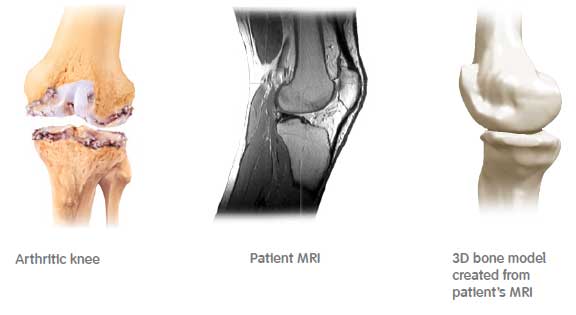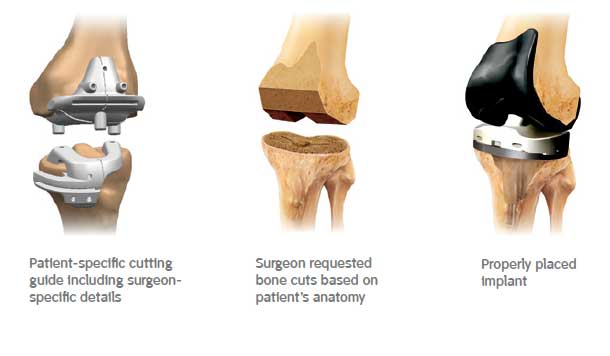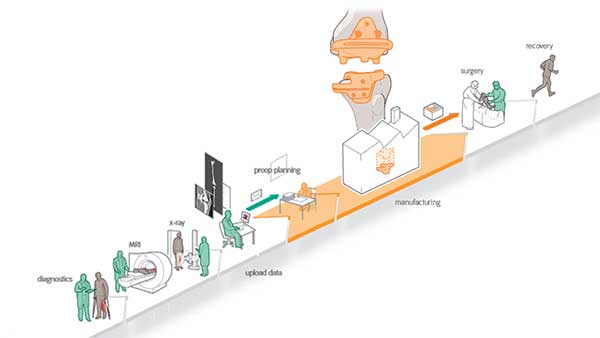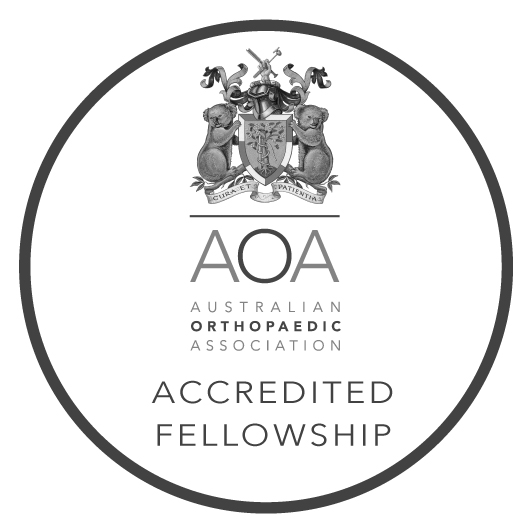Patient Specific Knee Replacement
Just like your fingerprints, everybody is different.
Which is why every patient-specific cutting guide is designed and manufactured for each person.
Total knee replacement
Years of research and development have gone into the creation of every element of the knee implant you are considering. Your implant’s specialised shapes and the materials from which it is made have all been engineered, manufactured and tested to deliver the most accurate and reproducible outcomes possible.
That same level of care is also extended to the instruments that will be used during your surgery. After all, no matter how expertly designed an implant is, if it is not correctly placed in your body, it will never be able to perform at its peak. Consequently, neither will you.
Patient-specific cutting guides
It is important to note patient-specific cutting guides do not change the basic premise of a total knee replacement. To reconstruct the joint’s functionality, your surgeon will remove the damaged bone and soft tissue in your knee and replace them with specially designed metal and plastic components. Patient-specific cutting guides allow your surgeon to select and position your new implant based on your anatomy.
Your implant has been shaped to reflect the natural shape of a healthy knee. The back, or inner surfaces, of your implant consist of several flat surfaces which come together at precise angles. However, the process of shaping your bones to tightly fit these angles can be complex and time consuming because no two knee joints are exactly the same.

Patient-specific cutting guides provide a personalised solution to your surgeon to bridge the gap between the precisely engineered implant and your anatomy.
Proposed Advantages of patient-specific cutting guides
Shorter, less-invasive surgery
Patient-specific cutting guides reduce the number of steps required to perform total knee replacement surgery and eliminate the need to insert guide rods into the thigh bone. Both of which potentially shorten the amount of time a patient spends in the operating room and reduce some of the associated risks.1-7. However these advantages haven't been borne out to date in the results of the Australian National Joint Replacement Registry.

Knowing what to expect
Patient-specific cutting guides allow the surgeon to know what to expect with surgery. A pre- op plan is created for your case and identifies your implant size and placement that will be used. This plan is sent to the surgeon before the cutting guides are even made.
Why is the MRI so important?
- MRI is used to create a 3-D model of your anatomy
- The 3-D model allows the cutting guides to be designed to fit your specific bones
- The cutting guides based off the MRI identifies your implant size and positioning
- It is important no movement occurs during your MRI to ensure the highest quality and best fit of your cutting guides
The process
The inner shape of the cutting guide matches the outer shape of your bones. This hand-in- glove fit allows surgeons to make the precise bone cuts needed to position the knee implant in the optimal alignment.
Patient-specific cutting guide process
- Diagnostics: Your surgeon will perform a diagnostic evaluation which will determine your need for a total knee replacement.
- MRI: A short 8 – 10 minute MRI scan is performed several weeks prior to your surgery date.
- X-Ray: A full leg standing X-Ray is also performed in conjunction with your MRI.
- Upload data: Your MRI and X-Ray are sent to the manufacturer to begin the design process of your cutting guides.
- Pre-op planning: A detailed plan of your surgery indicating your specific size is sent to your surgeon for review prior to your surgery date.
- Manufacturing: Your cutting guides are manufactured and then shipped for your surgery.
- Surgery: The cutting guides designed specifically for you are utilised for your surgery.
- Recovery: After surgery, your surgeon will provide you with details about your recovery.

Disclaimer
Patient specific guides have as yet not shown a reduction in the revision rate of knee replacements compared to non-patient specific guides (Source - Australian National Joint Replacement Registry). Total knee replacement is not for everyone. Children, pregnant women, patients who have mental or neuromuscular disorders that do not allow control of the knee joint and morbidly obese patients should not undergo a knee replacement procedure. Total knee replacement is intended to relieve knee pain and improve knee function. However, implants may not produce the same feel or function as your original knee. There are potential risks with knee replacement surgery such as loosening, fracture, dislocation, wear and infection that may result in the need for additional surgery. Longevity of implants depends on many factors, such as types of activities and weight. This information, including postoperative care, is provided for educational purposes only. Smith & Nephew does not provide medical advice. In no event shall Smith & Nephew be liable for any damages whatsoever arising out of the use of or inability to use the expressed views.
Note: The information and image included here in is the property of Smith & Nephew.






